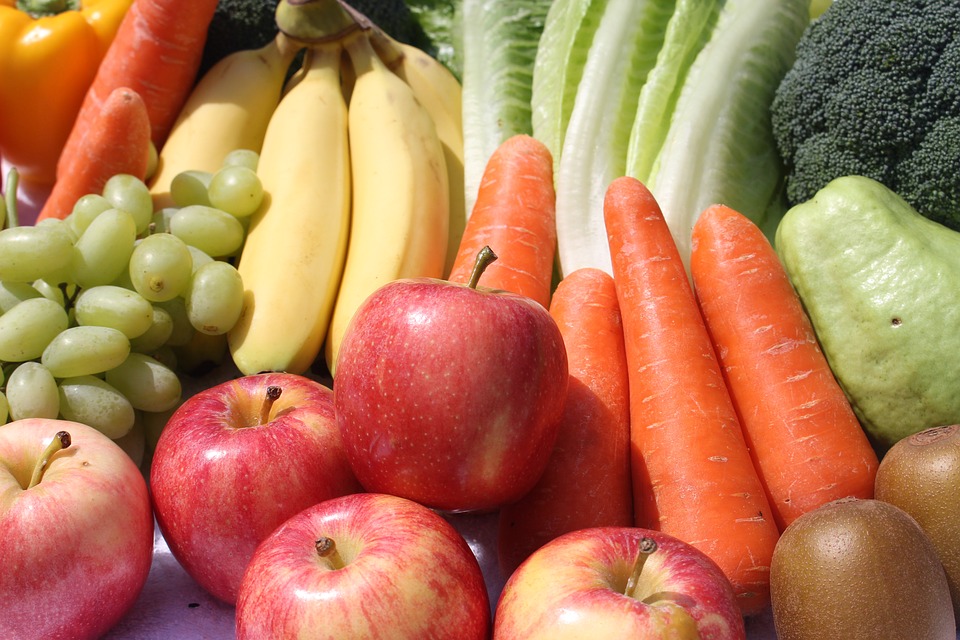By Nathan Chambers, Recent ASU Communication Nutrition Student
We all know that we should eat more fiber because it aids in digestion. But you may not have known the other important functions of dietary fiber… and they are much more influential than just helping you go. A high fiber diet promotes healthy gut bacteria, too!
Inside the human intestine, there are hundreds of different bacterial species with billions of individual bacteria. In a healthy gut, there are more bacterial cells than there are human cells in the entire body!

Functions of gut bacteria
- Immunity
Beneficial bacteria are integral to intestinal mucosa, which provides for intestinal immunity. One of the most common intestinal infections results in ischemic colitis– an infection which, left untreated, results in necrosis of the intestine and possibly death. Gut bacteria, by keeping the intestinal walls and mucus intact and by providing a direct infection-fighting response, keep invasive bacteria from latching onto the intestinal walls and causing infection. - Nutrition
Intestinal bacteria aid in the absorption of key nutrients (Vitamin K) and the production of some B vitamins. When Vitamin B production within the gut slows, immunity is hampered and inflammation can result. - Inflammation
Leaky gut is a condition in which the interior wall of the intestine is damaged and/or inflamed. This allows substances to ‘leak’ into the bloodstream. Leaky gut may have a negative influence on diabetes and, of course, on inflammatory bowel disease, as well as other disorders. Keeping your gut bacteria happy and healthy is vital in preventing leaky gut: when gut bacteria digest fiber, they produce fatty acids which are important to the structure and function of the intestinal wall, keeping inflammation down and the wall sealed.
Feeding your gut microbiome
It is obviously of extreme importance to keep your gut bacteria healthy– and the food you feed your gut should be rich in fiber. Bacteria are living organisms, and without their preferred food, they will resort to eating other things to stay alive. Some studies have shown that, in the absence of fiber, your gut bacteria can resort to eating the mucosal layer of the intestine, thereby eliminating their benefit and actually causing harm. Which means that if you do not feed your gut, your gut will eat you!
Get more fiber into your diet
- Black beans 12 grams of fiber per cup
- Peas 8 grams of fiber per cup
- Blackberries 7 grams of fiber per cup
- Whole almonds 5 grams of fiber per ounce
Cooking/baking with whole grains is also a great way to get more fiber into your diet without changing the way you eat. Just buy/make bread with whole grain.
Other great places to get fiber from are raspberries, flax seeds, broccoli, avocados, pears, oatmeal, figs, artichokes, Brussel sprouts, chickpeas, and quinoa, among many other foods.
Here is a tasty recipe by Fill Your Plate that can add a little more fiber to your diet:
- 2 fennel bulbs
- 4 small golden beets
- 1 avocado
- 1 shallot
- 4 tablespoons lemon juice
- 4 tablespoons rice wine vinegar
- 4 oz goat cheese
- 1 broccoli sprouts
- 1 olive oil
- 1 salt and pepper
Roast beets in an oven (leaves removed) for an hour at 400 degrees — until tender throughout. Finely dice the shallot and soak in lemon juice and vinegar for about 30 minutes. This will help the shallots mellow. Thinly shave fennel and then add to the shallot and liquids. Thinly slice avocado and sprinkle with lemon juice to keep from browning. Once beets are tender, let cool down and then slice thin. To plate, make a small base of golden beets on each dish, pile fennel on top of the beets, then crumble goat cheese on top of the fennel, arrange the avocado and garnish with broccoli sprouts, and add salt and pepper to taste. Finally, drizzle with a little olive oil.
If you liked this article:
– Convince your Kiddos to Eat More Fiber
– Everything you Ever Wanted to Know about Fiber
References
Weisenberger, J. (2012). Feed your “good” bacteria: Eat a high-fiber, plant-based diet and include fermented foods to boost levels of “good” bacteria in your gut. Environmental Nutrition, 35(6), 3.
Kamada, N., Sakamoto, K., Seo, S., Zeng, M., Kim, Y., Cascalho, M., . . . Núñez, G. (2015). Humoral immunity in the gut selectively targets phenotypically virulent attaching-and-effacing bacteria for intraluminal elimination. Cell Host & Microbe, 17(5), 617-627. doi:10.1016/j.chom.2015.04.001
Quigley, E. M. M. (2013). Gut bacteria in health and disease. Gastroenterology & Hepatology,9(9), 560.
Gominak, S. C. (2016). Vitamin D deficiency changes the intestinal microbiome reducing B vitamin production in the gut. the resulting lack of pantothenic acid adversely affects the immune system, producing a “pro-inflammatory” state associated with atherosclerosis and autoimmunity. Medical Hypotheses, 94, 103-107. doi:10.1016/j.mehy.2016.07.007

